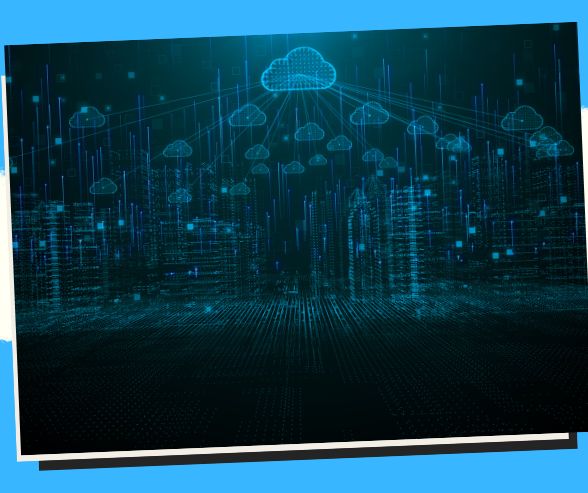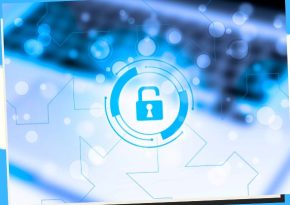
Decrypting Cyber Perils: Unveiling Threats and Risks in the Digital Era
Uncover the layers of digital danger as we decrypt cyber perils and unveil hidden threats. Dive into a comprehensive guide to understanding and mitigating modern risks.
Navigating the Digital Perils: Unraveling Cyber Threats and Risks in Today’s Landscape 


In our interconnected world, where small business owners, internet marketers, social media sellers, parents, and professionals coexist in the digital realm, understanding cyber threats and risks is not just an option but a necessity. As we ride the waves of technological advancement, a proactive approach to comprehending and mitigating these risks becomes paramount for the safety and success of all these diverse roles.
Unmasking the Faces of Cyber Threats
Cyber threats are akin to a chameleon, constantly changing colors to adapt to new environments and opportunities. From small-scale attacks on individual users to large-scale data breaches affecting corporations, the breadth of these threats is staggering.
- Phishing Attacks: The digital bait that lures unsuspecting victims into divulging sensitive information. Inboxes are flooded with deceptive emails that often appear legitimate, targeting not just individuals but also employees within companies.
- Ransomware: A digital hostage situation where malicious actors encrypt vital data and demand ransom for its release. The repercussions extend beyond financial loss, affecting business operations and reputation.
- Malware: Malicious software that can infiltrate systems, steal data, or even hijack control of devices. These digital invaders come in many forms, from viruses to spyware, seeking vulnerabilities in both software and human behavior.
- Data Breaches: A nightmare scenario where personal or business data falls into the wrong hands. Cybercriminals may exploit security vulnerabilities to access sensitive information, leading to identity theft, financial loss, and legal consequences.
Small Business Owners: Guarding Against Cyber Attacks
Small business owners often think they are immune to cyber threats, believing they may be too insignificant to attract attention. However, this couldn’t be further from the truth. Cybercriminals often see them as soft targets with potentially weaker security measures.
Implementing robust cybersecurity measures is akin to fortifying the walls of your digital castle. Regularly update software to patch vulnerabilities, employ strong encryption for sensitive data, and educate your employees about the importance of vigilance. Consider cybersecurity as an investment in your business’s future, safeguarding customer trust and business continuity.
Internet Marketers and Social Media Sellers: The Virtual Battleground
For internet marketers and social media sellers, the virtual realm is both a haven and a battlefield. The risks associated with these roles extend beyond financial losses and data breaches to potential damage to your brand reputation.
Being cautious about the links you click, using secure payment gateways, and staying updated on the latest phishing tactics are essential. Safeguard your online presence by utilizing strong authentication methods, encrypting sensitive customer information, and periodically reviewing your privacy settings. In the realm of online marketing, trust is the currency that keeps your business thriving.
Parents: Protecting Your Digital Natives
Parenting in the digital age comes with its own set of challenges. Children today are growing up with technology at their fingertips, which exposes them to various online risks.
Open communication is key. Engage in regular discussions about online safety, educate them about the potential dangers, and establish boundaries regarding their online activities. Utilize parental control software to monitor and manage their online interactions, ensuring a safe and educational digital experience. Remember, nurturing responsible digital behavior begins at home.
Professionals: Safeguarding Sensitive Information
In the professional world, data is the new gold. Protecting client information, financial records, and proprietary data is not just an option but a legal and ethical responsibility.
Adopting a multi-layered security approach is essential. Encrypt sensitive communications, use strong and unique passwords for different accounts, and regularly update software and security protocols. Whether you’re working remotely or in an office, prioritize cybersecurity to ensure your professional endeavors remain resilient in the face of cyber threats.
 Powerful Benefits of Understanding Cyber Threats
Powerful Benefits of Understanding Cyber Threats
- Enhanced Digital Safety
– Knowing threats helps individuals and companies secure systems proactively.
- Improved Business Continuity
– Avoiding downtime and data breaches preserves trust and revenue.
- Faster Threat Detection
– Awareness leads to quicker identification and resolution of cyberattacks.
- Compliance with Data Regulations
– Understanding risks ensures compliance with laws like GDPR and HIPAA.
- Protection of Personal Data
– Prevent identity theft and data misuse with proactive security.
- Increased Consumer Trust
– Secure platforms attract loyal customers who value privacy.
- Cost Savings
– Avoid financial losses due to ransomware or breaches.
- Reduced Legal Liability
– Strong cybersecurity reduces the chances of lawsuits and fines.
- Stronger Employee Awareness
– Educated teams are the first line of defense against phishing.
- Innovation with Confidence
– Secure infrastructure allows bold tech advancements.
 Pros and
Pros and  Cons of Cybersecurity Measures
Cons of Cybersecurity Measures
Pros  | Cons  |
|---|---|
| Prevent data breaches and theft | Initial costs can be high |
| Strengthen brand reputation | Complexity in setup and maintenance |
| Ensure regulatory compliance | Can slow down operations if not optimized |
| Empower employee vigilance | False positives in security systems |
| Enable safe digital transformation | Requires ongoing training and updates |
| Protect intellectual property | Small businesses may struggle to afford it |
| Encourage customer confidence | Sophisticated threats keep evolving |
| Avoid costly ransomware demands | Tools can be misconfigured without expertise |
| Help detect insider threats | Potential resistance from staff |
| Secure remote work infrastructure | Not foolproof against advanced persistent threats (APTs) |
 Real-World Case Studies: When Cyber Threats Became Real
Real-World Case Studies: When Cyber Threats Became Real
- Equifax Breach (2017) – Exposed personal data of 147M Americans due to an unpatched Apache server.
- WannaCry Ransomware (2017) – Global ransomware attack that disrupted hospitals and banks.
- SolarWinds Hack (2020) – A supply chain attack affecting US federal agencies and Fortune 500s.
- Yahoo Data Breach (2013–2014) – Compromised 3B accounts, affecting brand trust.
- Colonial Pipeline Attack (2021) – Fuel supply disrupted after ransomware attack; ransom was paid.
- Target (2013) – Attack via third-party vendor led to data breach of 40M credit cards.
- Uber Breach (2016) – Hackers accessed personal data of 57M users; Uber concealed the incident.
- Facebook Data Leak (2019) – Personal data of 533M users published online.
- Ashley Madison Hack (2015) – Sensitive data released, causing reputational and legal issues.
- Marriott International (2018) – Data breach affecting 500M guests from 2014 to 2018.
 Key Takeaways to Stay Cyber-Smart
Key Takeaways to Stay Cyber-Smart
Always update software – Most breaches stem from unpatched vulnerabilities.
Train staff against phishing – Email remains a top attack vector.
Monitor systems in real-time – Early detection prevents escalation.
Encrypt sensitive data – Especially during transmission and storage.
Conduct regular security audits – Spot weaknesses before attackers do.
Use multi-factor authentication (MFA) – Adds an extra layer of defense.
Secure cloud infrastructure – Configure access rights and encryption correctly.
Backup data frequently – Essential for recovery after ransomware.
Update passwords often – Strong, unique passwords reduce breach risk.
Foster a security-first culture – Cybersecurity is everyone’s responsibility.
 Frequently Asked Questions (FAQs)
Frequently Asked Questions (FAQs)
- What is the biggest cyber threat today?
Ransomware and phishing attacks remain top threats due to their evolving sophistication. - How can small businesses protect themselves?
Use firewalls, endpoint security, employee training, and cloud backups. - Is antivirus software enough?
No—it’s one piece. You also need firewalls, MFA, and user awareness. - What is social engineering in cybersecurity?
Psychological manipulation to trick people into giving up confidential information. - Why are cyberattacks increasing?
Growing digital dependence, remote work, and more devices create vulnerabilities. - How do hackers pick their targets?
Through automated scans or high-value targets (like hospitals or banks). - What is zero-trust security?
A model that assumes no user or device is automatically trusted. - How often should I change my password?
Every 60–90 days or immediately if you suspect a compromise. - Is public Wi-Fi safe to use?
Not unless you use a VPN to encrypt your connection. - What should I do after a cyber attack?
Isolate affected systems, contact cybersecurity experts, inform stakeholders, and report to authorities.
Conclusion: The Digital Guardians We Must Be
In an era where technology interweaves with our daily lives, understanding cyber threats and risks becomes a shared responsibility. Whether you’re a small business owner, an internet marketer, a social media seller, a parent, or a professional, the digital landscape requires your vigilance and commitment to security.
By arming ourselves with knowledge, embracing proactive security measures, and fostering a culture of cyber awareness, we can collectively navigate the intricate digital waters with confidence. Remember, the keys to unlocking a secure digital future lie within our willingness to learn, adapt, and guard against the ever-evolving realm of cyber threats.
 Link Resources to Learn More
Link Resources to Learn More
- Cybersecurity & Infrastructure Security Agency (CISA)
- National Institute of Standards and Technology (NIST)
- Krebs on Security
- SANS Institute
- Dark Reading
 Key Phrases
Key Phrases
- Cybersecurity in the digital age
- Common types of cyber threats
- Phishing and ransomware attacks
- Cybersecurity best practices
- Importance of encryption
- Cybercrime prevention tips
- Data protection strategies
- Real-life cybersecurity breaches
- Digital risk management
- Cybersecurity awareness training
 Best Hashtags
Best Hashtags
#CyberSecurity
#DataProtection
#InfoSec
#Ransomware
#OnlineSafety
#DigitalSecurity
#CyberAwareness
#TechRisks
#Hacking
#MFA
Save/Share this story with QR CODE
Disclaimer
This article is for informational purposes only and does not constitute endorsement of any specific technologies or methodologies and financial advice or endorsement of any specific products or services.
 Need to get in touch?
Need to get in touch?

We appreciate your reading. 
1.) 

Your DONATION will be used to fund and maintain NEXTGENDAY.com
Subscribers in the Philippines can make donations to mobile number 0917 906 3081, thru GCash.
3.) 
4.) 
AFFILIATE PARTNERS

World Class Nutritional Supplements - Buy Highest Quality Products, Purest Most Healthy Ingredients, Direct to your Door! Up to 90% OFF.
Join LiveGood Today - A company created to satisfy the world's most demanding leaders and entrepreneurs, with the best compensation plan today.

 Business, Finance & Technology
Business, Finance & Technology














